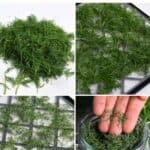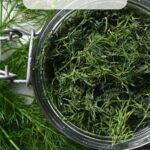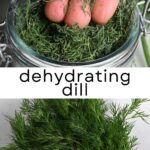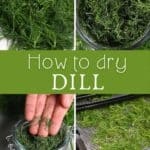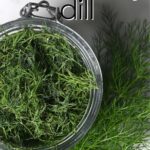This post may contain affiliate links. Please read our disclosure policy.
How to dry dill with one of three methods: in the oven, using a dehydrator, or air-drying. As well as how to store and use the dried dill!
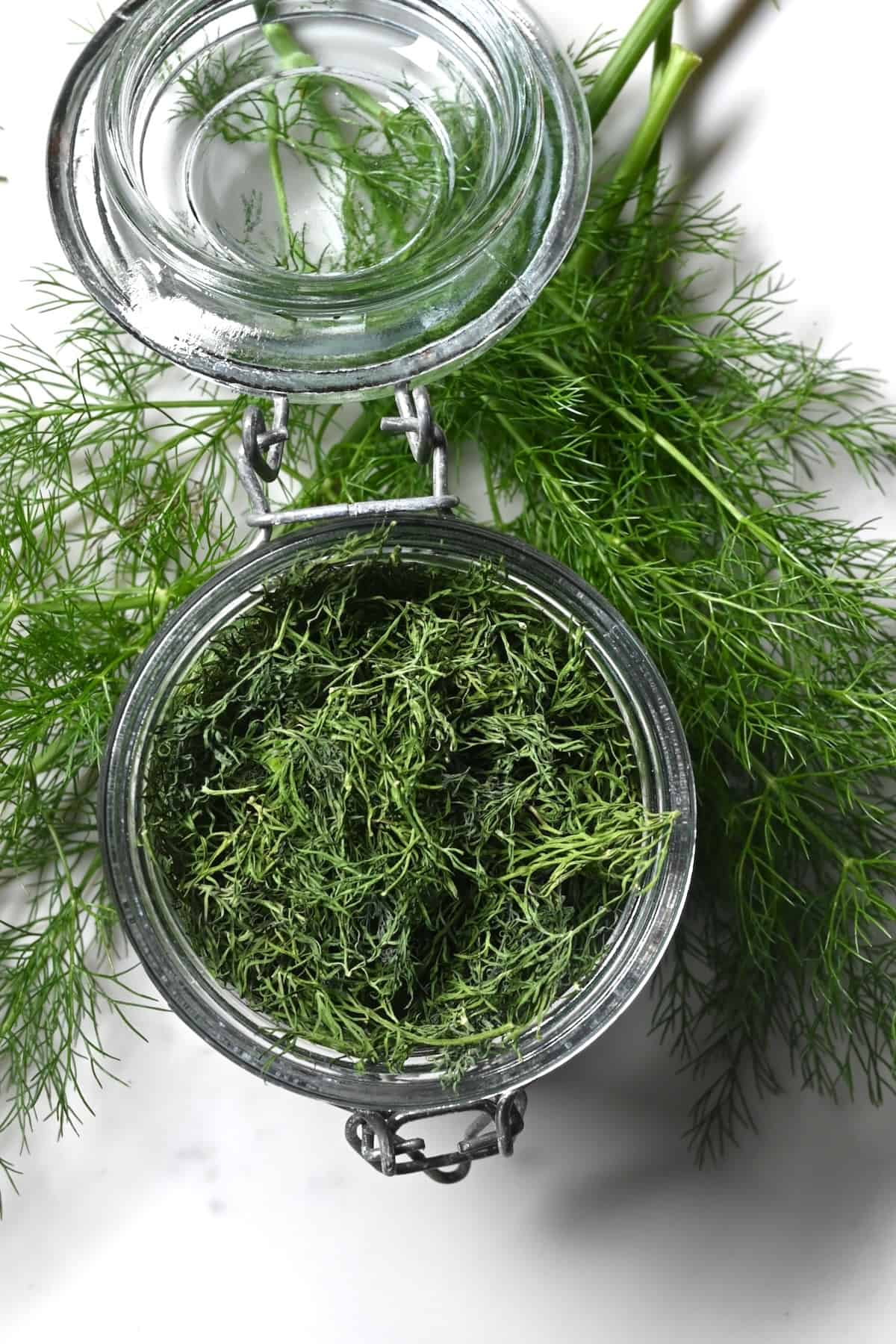
Dill is such a versatile herb that you use in a variety of different dishes and cuisine. It is one of my favorites to collect and dry. The drying process preserves its earthy flavors and helps it to last a lot longer than fresh dill. I also find it brings the most out of the dill when you use it in your cooking.
In this post, I share my tips on how to dry fresh dill, including 3 different methods and how to store and use dill. And if you are looking at drying some other herbs, why not dry some sage leaves, chives, thyme, or rosemary?
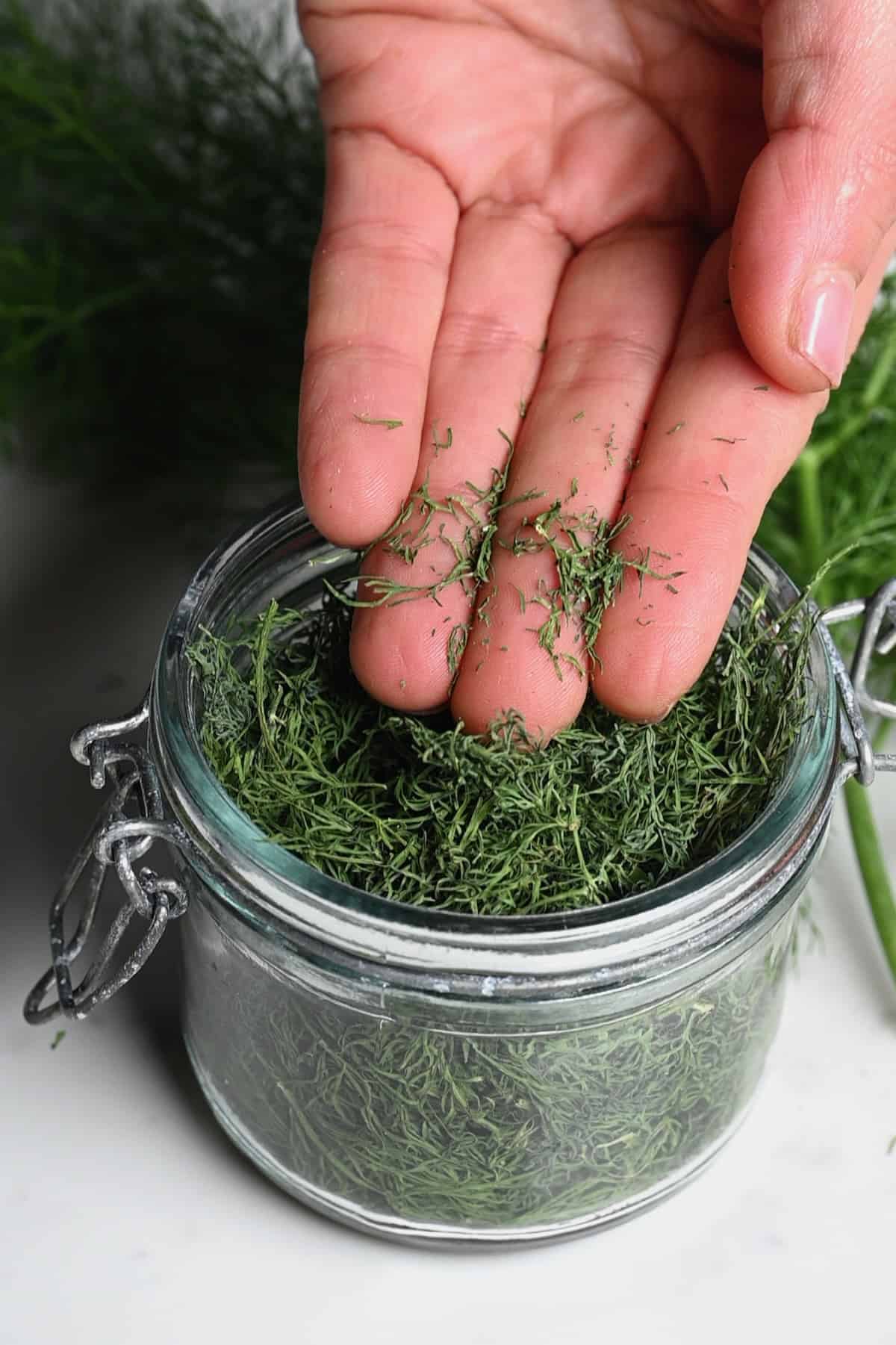
Want to save this recipe?
How to Dry Dill
Depending on your equipment, there are 3 different ways to dry dill. I love using my dehydrator, but you can also use an oven or simply air-dry your herbs.
Start by rinsing the fresh herbs well. Then pat it dry with paper towels to remove any excess water.
Next, remove the stems (unless you are air-drying them) and discard any yellow or brown feathery leaves. After this, it’s time to start drying!
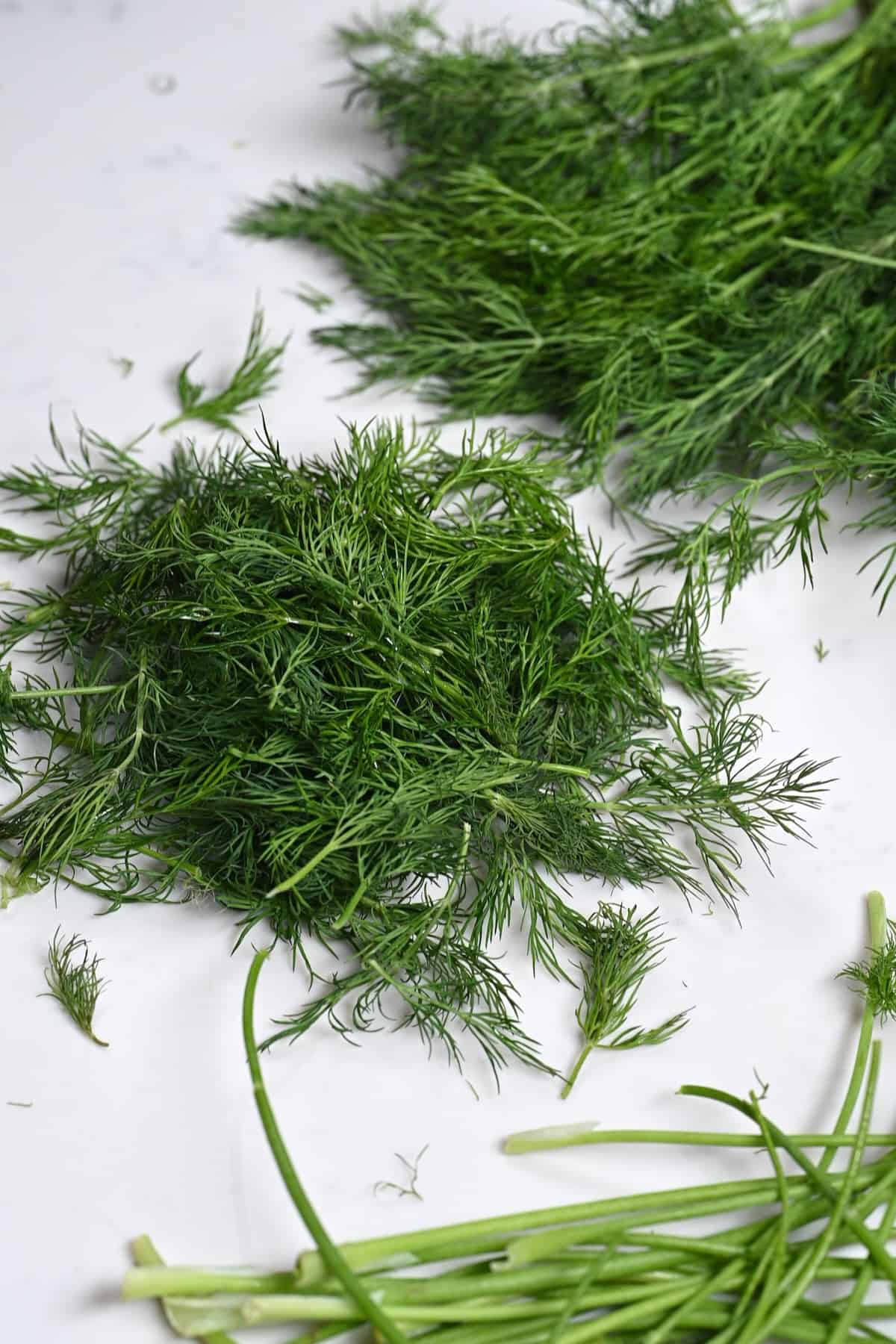
In a Dehydrator
A dehydrator is one of the fastest and most efficient ways to dry dill. Make sure to preheat the dehydrator first to around 95-115ºF/35-46ºC.
Then spread the dill in a single layer on the trays with some space between. This is so the air can circulate for even, quicker drying.
Leave it to dry for around 2-4 hours – check on it at the 2-hour mark and then every 15-20 minutes. You know when it’s fully dried when the leaves feel brittle – they will easily crumble.
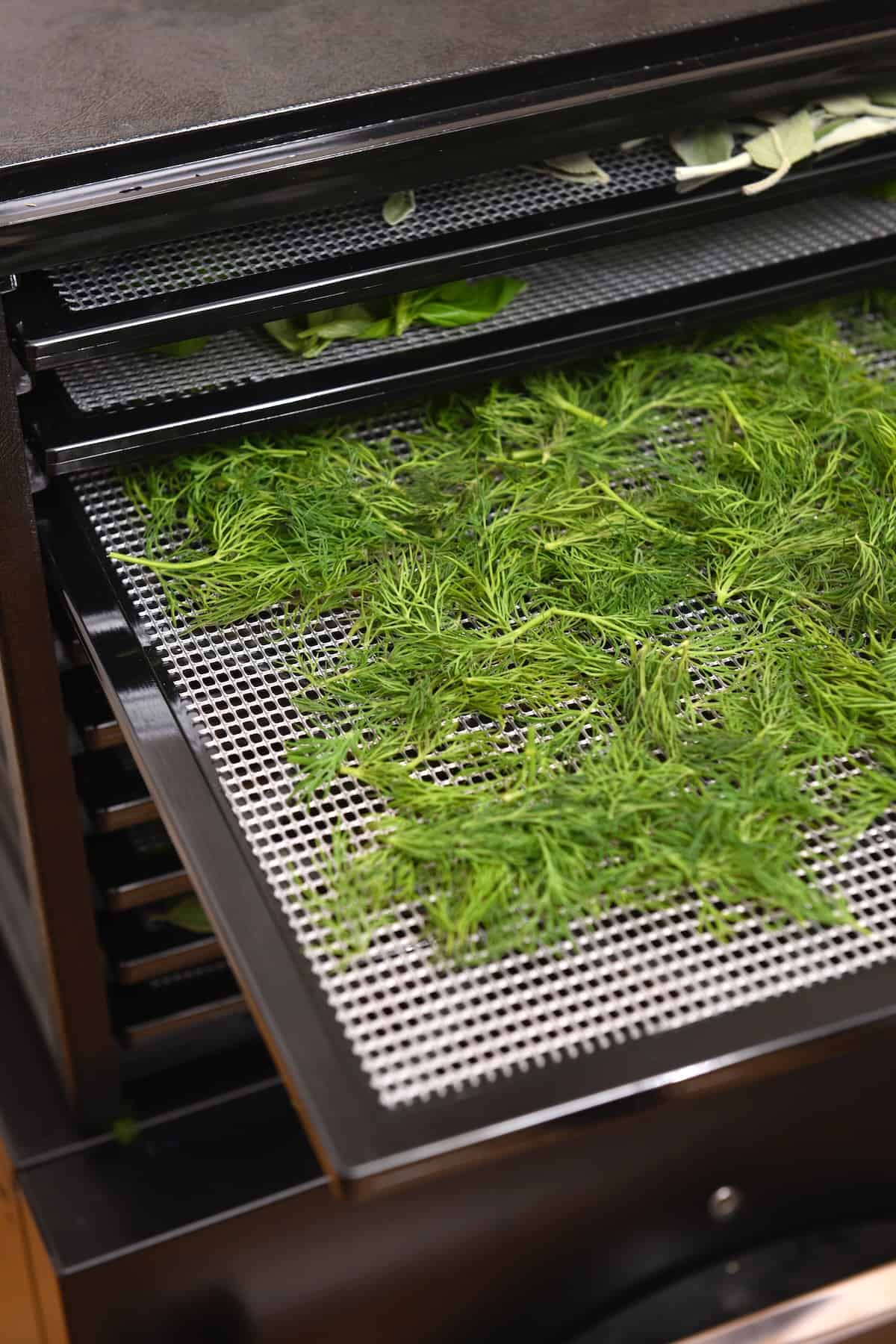
You may need to leave it for longer in the dehydrator depending on the temperature, humidity, and the type of dehydrator you have.
In the Oven
To dry dill in your oven, first, preheat your oven to its lowest setting – this is usually around 170°F/75°C. Make sure to spread out all the dill leaves in single layers on your baking sheets to ensure they dry out fully.
It also helps to line your baking sheets with parchment paper so the whole leaf dries.
Place the baking sheet in the oven and over-dry for about 1-2 hours. Make sure to leave the oven door slightly ajar with the help of a wooden spoon to allow the excess moisture to escape and so that the dill doesn’t “cook”. I suggest checking on the herbs at the 30-minute mark and every 15 minutes after that.
Chef’s tip: Some modern ovens have a dehydrating feature, allowing you to go as low as 95-115ºF/35-46ºC. In that case, there’s no need to prop the door open.
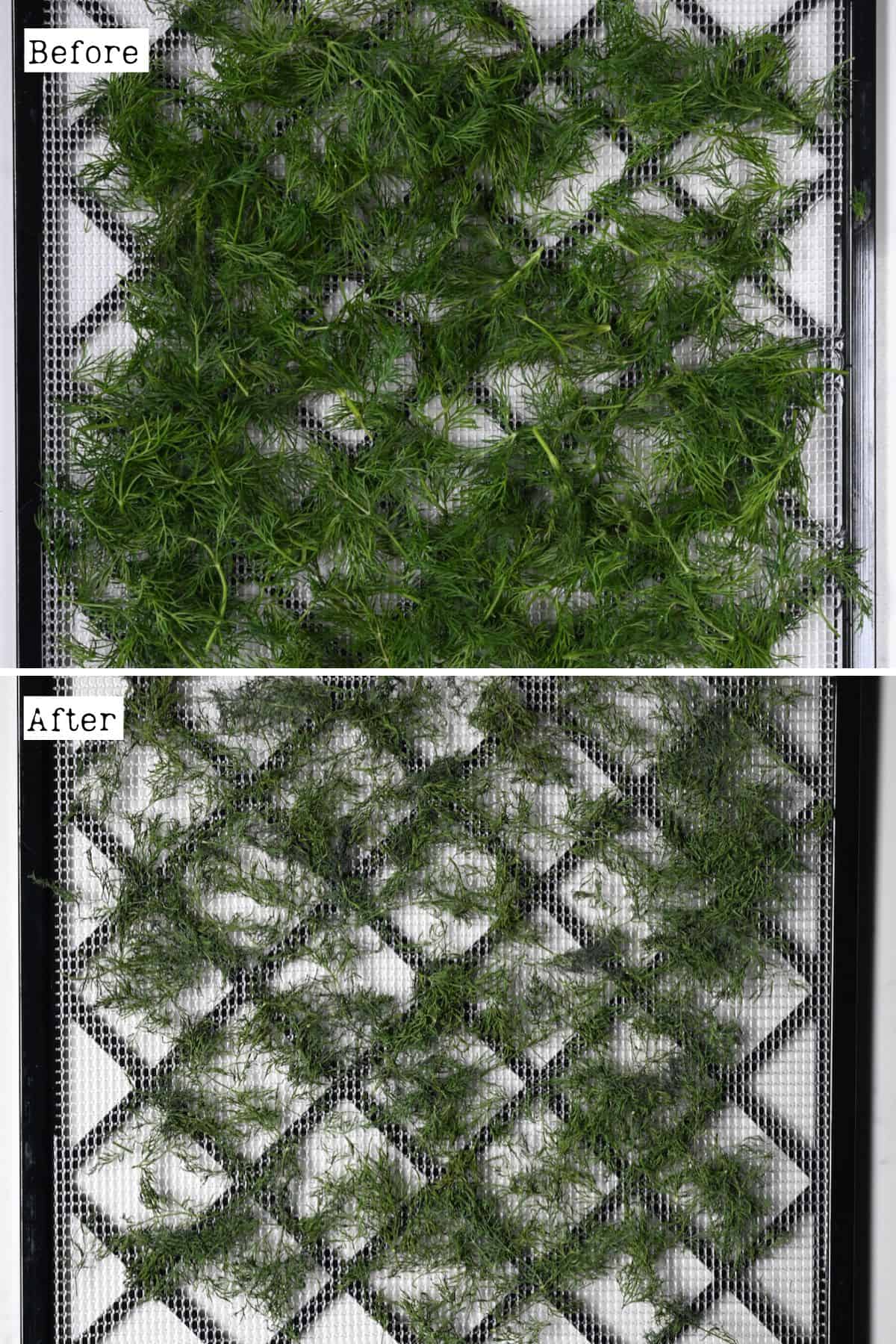
Air Drying
Air drying dill is probably the easiest method if you have the patience to wait for your herbs to dry by themselves! Simply tie your fresh dill into small bundles – use rubber bands or twine.
Then hang these bundles upside down in a warm, dry, and well-ventilated area for several days until the dill is completely dry. You want to make sure both the leaves and stems are completely dry before taking them down.
How to Store Dried Dill
To get the most out of your dry dill, make sure you store it properly. I like to break my mine into smaller pieces so it’s easy to use in my home cooking. It’s best to store it in an airtight container in a cool dark place like a cupboard or pantry.
Also, it’s best to use it within a year.
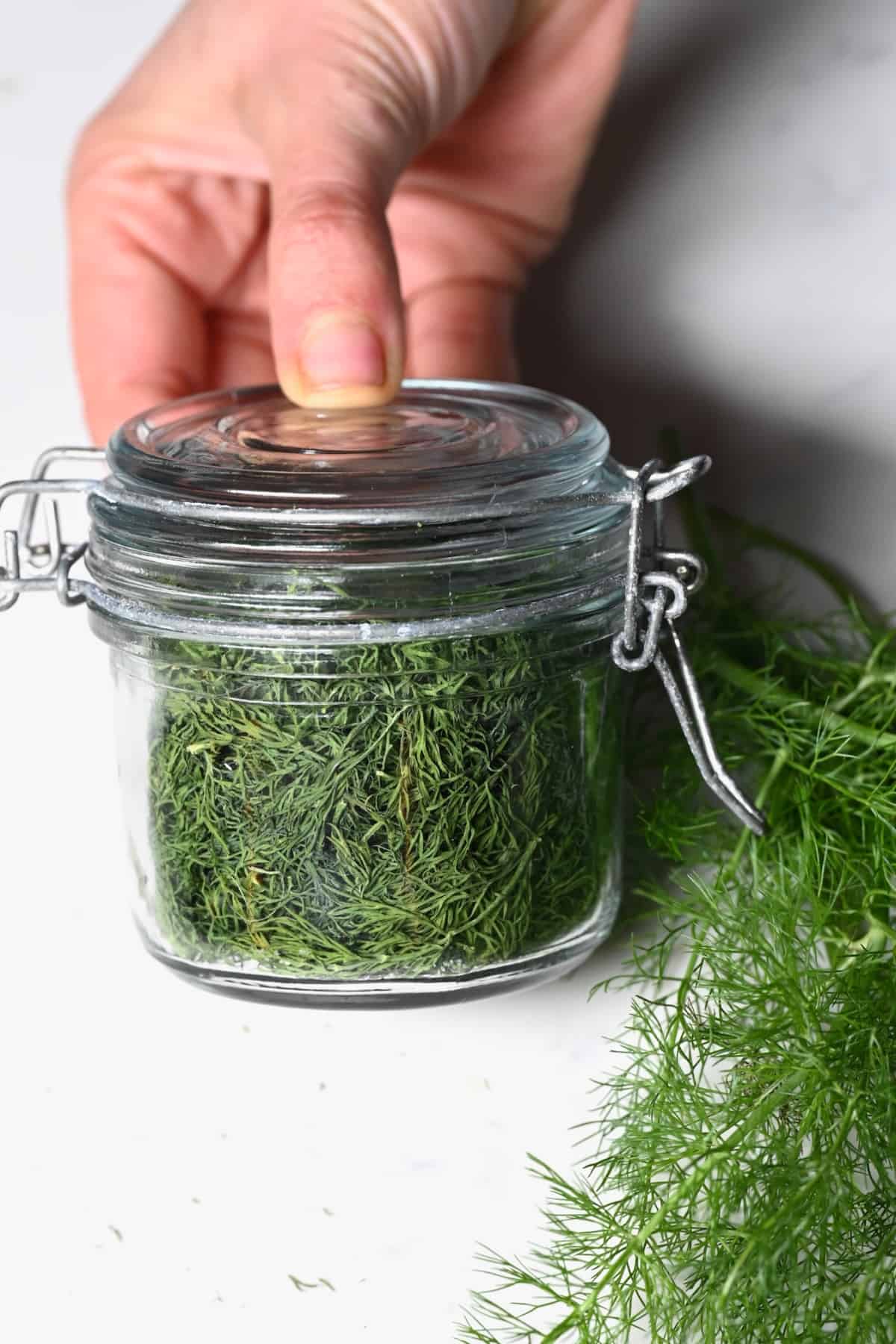
How to Use Dried Dill
Dried dill can be used in many dishes or as a garnish to give your dish a finishing touch.
- Add to your own seasoning blends for a bright, herbaceous note,
- Add to dips and sauces like Greek yogurt sauce, ranch dressing, or tzatziki sauce,
- Make delicious basmati rice to accompany your mains,
- It’s great in salad dressings or added to salads,
- It’s a classic seasoning for soups and stews like this beef stew,
- Add to baked goods like bread, crackers, or biscuits,
- Mix it into mashed potatoes for the tangy flavor of dill.
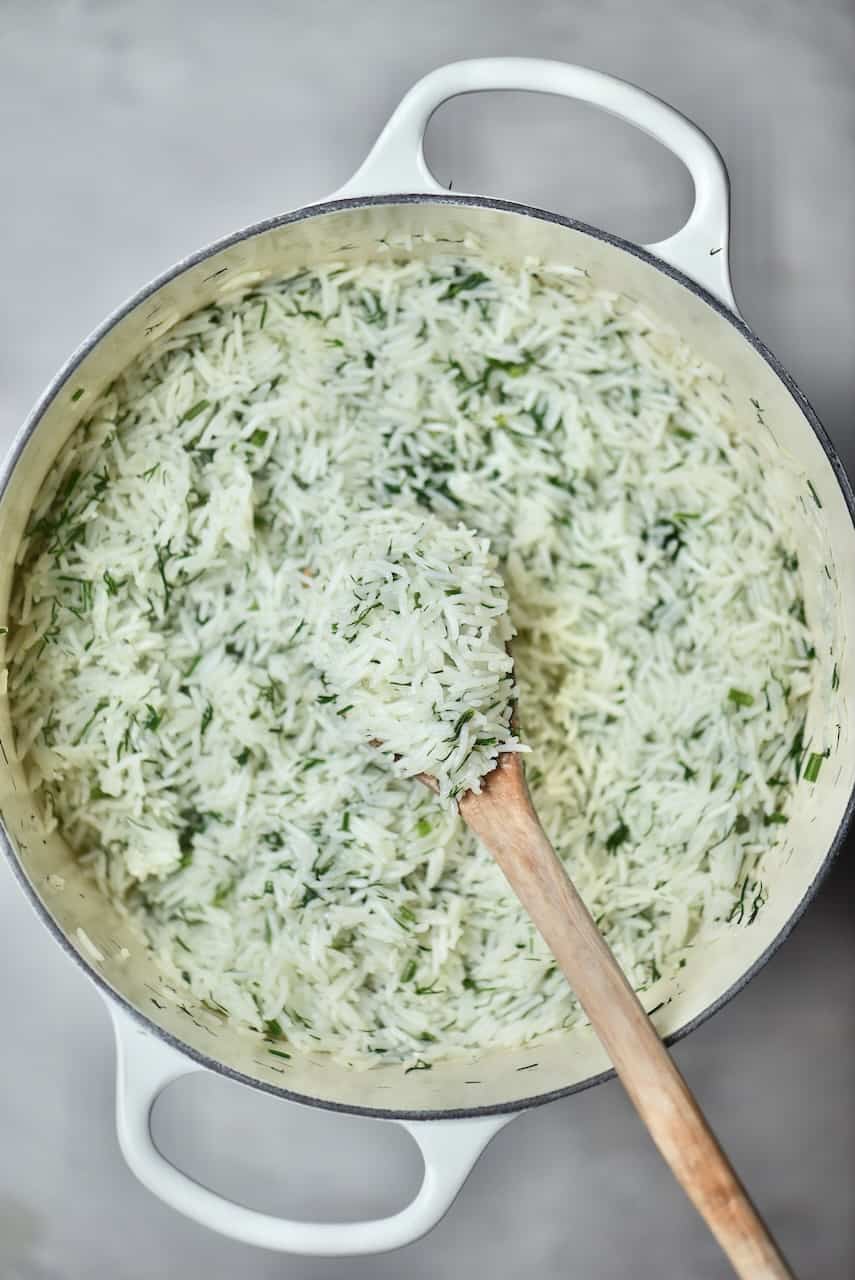
Is Dill Weed the Same as Dill
Yes, dried dill vs dill weed are essentially the same thing. The term “dill weed” typically refers to the feathery green leaves of the plant. The “dill” can mean the entire plant, including the leaves, stems, and seeds.
FAQs
When comparing how much dried dill vs fresh dill to use in cooking, I follow a 1:3 ratio (fresh to dry). This means for every 1 Tbsp of fresh dill called for in a recipe, you need 1 tsp of dry dill.
You can do a lot with dill stems! I tend to chop them up and then freeze them so I can easily add them to soups or stews. You can also use them for cooking rice, fish, lamb, and even eggs. Alternatively, feel free to compost them.
More Drying Tutorials
If you try any of these methods for dehydrating dill, let me know how it goes in the comments below. I’d appreciate a recipe card rating and would love to see your recipe recreations – tag me on Instagram @Alphafoodie!
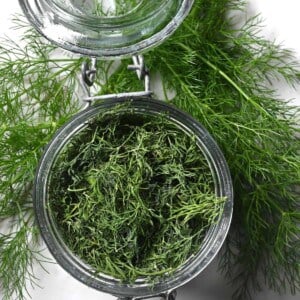
How to Dry Dill (3 Easy Ways)
Equipment
- Dehydrator or oven
Ingredients
- 3 oz dill or as much as wanted
This will yield about 0.7 oz/20 g of dried dill
Instructions
- Rinse the fresh herbs well. Then pat them dry with paper towels to remove any excess water.
- Remove the stems (unless you are air-drying them) and discard any yellow or brown feathery leaves. Then choose your drying method.
Using a Dehydrator
- Preheat the dehydrator first to around 95-115ºF/35-46ºC. Then spread the dill in a single layer on the trays with some space between.
- Leave it to dry for around 2-4 hours – check on it at the 2-hour mark and then every 15-20 minutes. You know when it's fully dried when the leaves feel brittle – they will easily crumble.
Using an Oven
- Preheat your oven to its lowest setting – this is usually around 170°F/75°C. Then spread the herbs in single layers on your baking sheets.
- Place the baking sheets in the oven and over-dry for about 1-2 hours. Make sure to leave the oven door slightly ajar with the help of a wooden spoon to allow the excess moisture to escape and so that the dill doesn't "cook". Check on the herbs at the 30-minute mark and every 15 minutes after that.Some modern ovens have a dehydrating feature, allowing you to go as low as 95-115ºF/35-46ºC. In that case, there's no need to prop the door open and you can dry them for 2-4 hours.
Air Drying
- Tie the fresh dill into small bundles – use rubber bands or twine.
- Hang these bundles upside down in a warm, dry, and well-ventilated area for several days until the dill is completely dry. You want to make sure both the leaves and stems are completely dry before taking them down.
Notes
Nutrition
Nutrition information is automatically calculated, so should only be used as an approximation.

